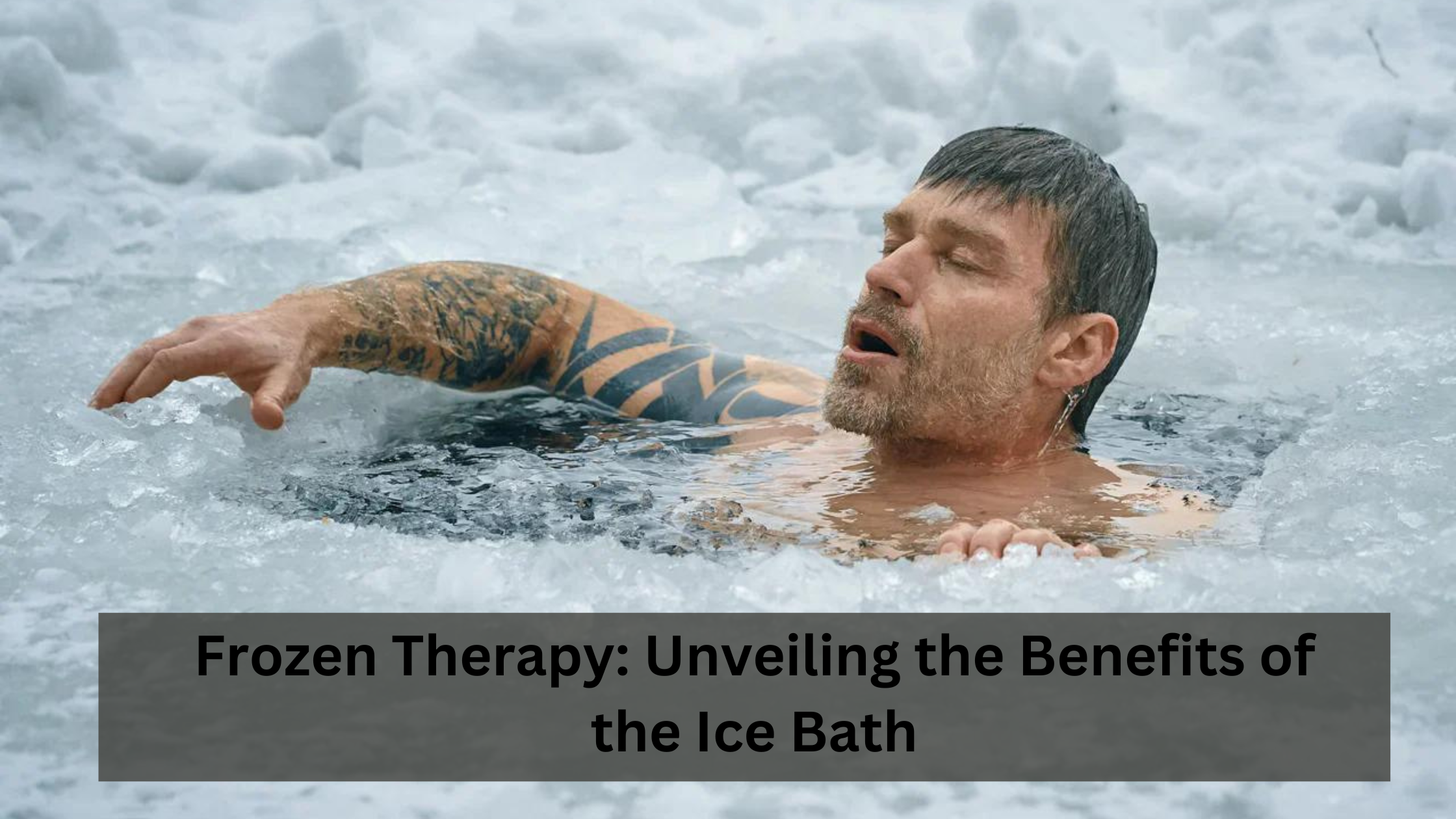Frozen Therapy: Unveiling the Benefits of the Ice Bath
These days, ice baths are quite cool. You’re not alone if you feel like you can’t browse social media without witnessing someone brave a cold plunge for their health.
It seems like everyone uses ice baths these days for a variety of health and psychological advantages. Not only are they becoming more and more well-liked by ordinary people but also by celebrities and influencers. Athletes love using the toe-numbing technique as a post-workout ritual to ease aching muscles, and many believe ice baths boost their mood, reduce inflammation, and facilitate weight loss.
Five possible advantages of ice baths
If you’re thinking about giving an ice bath a try, you may be wondering what the possible advantages are and whether it’s worth freezing your body so much. The good news is that there may be some benefits to having an ice bath, especially for athletes who frequently practice or compete.
Assists with hurting and tight muscles
Gardner believes that the fact that ice baths just feel nice for the body is probably their biggest advantage. “The cold immersion can be a relief to sore, burning muscles after an intense workout,” according to him.
Promotes the health of your CNS
According to Gardner, taking an ice bath can also benefit your central nervous system by promoting sleep, which will improve your mood by reducing weariness.
Furthermore, he claims that it can enhance explosiveness and response time in subsequent sessions.
Controls the inflammatory reaction
According to Jey, the notion is that after exercise, lowering the local temperature helps minimize the inflammatory response, reducing inflammation and hastening your recovery.
Lessens the impact of humidity and heat
The effects of humidity and heat can be lessened by taking an ice bath. According to Gardner, “taking an ice bath before a long race in an environment with an increase in temperature or humidity can lower core body temperature by a few degrees which can lead to improved performance.”
Develops the vagus nerve
Aurimas Juodka, CSCS, CPT, a qualified strength and conditioning specialist, states that training your vagus nerve is one of the key advantages of an ice bath. “Training the vagus nerve can help you face stressful situations more appropriately because it is linked to the parasympathetic nervous system,” he says.
Risks and side effects of ice baths
Immersing your body in cold water and feeling extremely cold is the most obvious side effect of an ice bath. However, there are some other risks to be mindful of in addition to this apparent adverse effect. Gardner states that “people who have a preexisting cardiovascular disease or high blood pressure are at primary risk when taking an ice bath.”
“The body’s blood flow is slowed down by the reduction in core temperature and the immersion in ice,” the expert claims. If your blood flow is reduced, as Gardner claims, you run the chance of suffering a stroke or cardiac arrest, so this might be deadly. Hypothermia is another possibility, particularly if you stay in the ice bath for an extended period of time.
Advice about ice bathing
Before immersing your body in ice, there are a few things you need know if you’re ready to make the plunge.
The ice bath’s temperature
Gardner states that an ice bath should be between 10 and 15 degrees Celsius, or 50 and 59 degrees Fahrenheit.
The duration of the ice bath
Overindulging in an ice bath might have negative effects. You should so set a time limit of no more than ten to fifteen minutes.
Exposure of the body
Gardner states that in order to get the maximum benefit of blood vessel constriction, it is usually advised to submerge your complete body in the ice bath. But perhaps you might start by baring your lower legs and feet. You can advance toward your chest as soon as you’re comfortable.
Utilization at home
Gardner advises using a thermometer to help you balance the ice to water mixture at the proper temperature if you choose to take an ice bath at home. Add ice gradually if the temperature rises too high—above 15°C or 59°F. If the water temperature is too low, raise it progressively until the appropriate level is reached.
Time of the bath
“It is best to take an ice bath as soon as possible after working out or competing,” advises Gardner. If you wait an hour after the workout, he says, some of the inflammatory and healing processes have either begun or finished.
Hunter Reaction / Lewis Reaction
Another way to get the most out of applying ice to sore muscles is to follow the 10-10-10 pattern and apply the Hunters Reaction/Lewis Reaction technique.
In summary
There isn’t any evidence challenging the advantages of ice baths. CWI post-workout is still recommended by many specialists for athletes and serious exercisers. Ice baths are an excellent method for recuperating from a strenuous workout or sporting event. Just be sure to follow the specified criteria, particularly regarding temperature and time.











